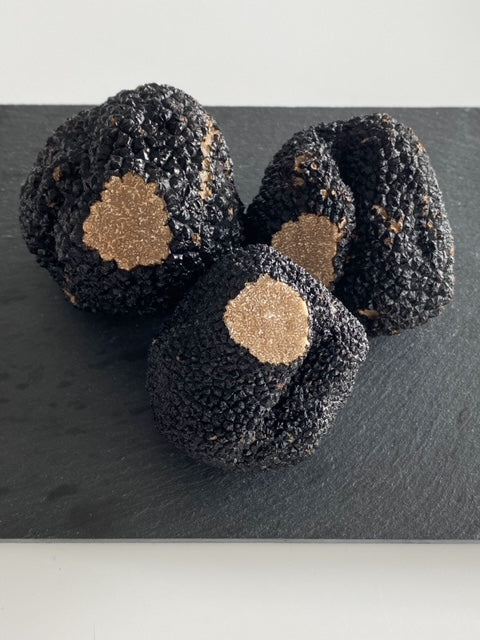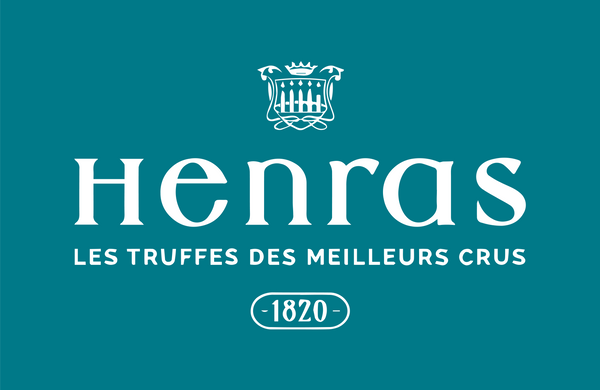
The truffle is an exceptional product full of secrets. But what about the trees at the foot of which it forms? These plant species are fascinating, highly prized for their ability to produce truffles, by creating an exchange of nutrients through the soil. An article to learn even more about the world that surrounds the truffle and its culture, making it a diamond of gastronomy.
THE BIRTH OF THE TRUFFLE
The truffle tree is characterized by mycorrhizal contamination created by the mycelium of the fungus present in the soil. As a reminder, the mycelium is an underground network of filaments (hyphae) that make up the digestive system of a mushroom. Mycorrhiza is the symbiosis between the mycelium of a mushroom and a tree .
Mycorrhiza is created when the hyphae of the fungus connect to the roots of the tree . It creates an immense network between the trees and the fungi , a network which allows the mutualized exchange of nutrients inaccessible otherwise for one as for the other. The formation of the truffle is detailed in our related article .
We recall that the truffle is the reproductive organ of the fungus in question. However, the tree will only be able to produce truffles if it is located in an area conducive to truffle growing . For the black truffle, tuber melanosporum :
- The soil should be rich in calcium
- The soil must have a ph above 7, be well aerated and rich in organic matter
- The climate also plays an important role in the presence of truffles , the supply of rainwater and regular exposure to the sun are essential for their growth.
Be careful however, his information is not an exact science and the truffle can be capricious in its development, the best truffle growing conditions do not guarantee the presence of truffles in a systematic way.
“The best truffle growing conditions do not guarantee the systematic presence of truffles. »
THE DIFFERENT TRUFFLE TREES
Some trees , called hecto-mycorrhizal , are characteristic of truffle growing . The holm oak which keeps its leaves in winter and the white oak are both truffle trees of trivial fame in the high places of truffle growing .

However, the truffle arboretum includes more than 30 different varieties of truffle trees such as sessile oak , birch , hornbeam or even beech . The list is far from being exhaustive and it should be noted that each variety of truffle has its preferences in terms of truffle trees .
The tuber melanosporum or black Périgord truffle will prefer pedunculate oaks , holm or pubescent oaks, linden or even hazel .
THE DEVELOPMENT OF TRUFFLE LANDS
Natural truffle fields are less and less numerous. Climate change, rural exodus and the scarcity of farming areas have constrained the areas that can accommodate the development of truffles . The truffle needs a soil devoid of dense vegetation to develop.
In the past, beasts of burden in freedom helped in the pruning of groves, bushes and weeding of meadows. A godsend for the truffle which could therefore develop without constraints. Today the truffle growers in France collect 30 tons of truffles compared to 1500 tons less than a century ago.
Currently, the average harvest per truffle grower in France is 2 kg per year. Nature also plays an important role in the depletion of truffles , the development of other non-hypogeal fungi , preventing the mycelium from developing and mycorhizing the roots of trees . The truffle mushroom is often too fragile to prevail against other mushrooms .
“Today the truffle growers in France collect 30 tons of truffles compared to 1,500 tons less than a century ago. »
However, for more than 30 years, INRA, the National Institute for Agricultural Research, has been developing and improving a solution to reverse the trend and slow down the depletion of truffles in their natural environment. Researchers have developed a way to create truffle trees, mycorrhizal, which they replant in the old truffle- growing areas .
The technique consists in infecting the seed of the tree (future truffle tree) even before it is planted to ensure the mycorrhization of its roots in a more certain way. These new trees , devoid of any fungi other than the truffle fungus , may later allow the development of truffles .
THE MAN AND THE TRUFFLE PITCHES
 To compensate for the scarcity of natural truffles , man has developed artificial mycorrhization . To do this, truffles are selected then crushed and mixed with potting soil. Acorns from good-yielding truffle oaks are planted in the mixture obtained. The plants are placed under cover, in a greenhouse, for 8 months. The plants are then placed in the nursery for two years in order to become more robust. Throughout this process, experts analyze the shrubs to verify and certify mycorrhization . The trees are finally sold to truffle growers who replant them in formerly natural truffle fields .
To compensate for the scarcity of natural truffles , man has developed artificial mycorrhization . To do this, truffles are selected then crushed and mixed with potting soil. Acorns from good-yielding truffle oaks are planted in the mixture obtained. The plants are placed under cover, in a greenhouse, for 8 months. The plants are then placed in the nursery for two years in order to become more robust. Throughout this process, experts analyze the shrubs to verify and certify mycorrhization . The trees are finally sold to truffle growers who replant them in formerly natural truffle fields .
This method is proven and is regularly improved by truffle growers themselves and researchers. Today this rescue has only made it possible to stabilize truffle production in our regions, and does not yet constitute a sufficient yield to be able to claim that Man has succeeded in cultivating truffles .
250,000 mycorrhizal trees are planted in France each year, the first truffles appear after 3 to 4 years and the real harvest can be done from 10 to 15 years for a yield of only 2 to 4% of mycorrhizal trees , this represents between 2 and 15 kg per hectare per year from the seventh year.
These figures prove that truffle cultivation is still unstable and uncertain and also too dependent on the weather of the year. These excessively variable yields make it impossible to reasonably simulate a return on investment in agricultural land.
“250,000 mycorrhizal trees are planted in France each year. »
Only Spain, thanks to its Mediterranean climate and mycorhization work started more than 30 years ago, has succeeded in developing truffle cultivation whose yields are bearing fruit. This advance in research makes it the main producer and exporter on the world market of Tuber Melanosporum, known as the "black truffle of Périgord".
Truffle growing still remains a supporting activity for French farmers, enthusiasts and lovers of our land. However, the accelerating climate change, the urbanization and transformation of our countryside, the mechanization and industrialization of agriculture are all brakes that jeopardize all truffle growing . In the next few years, the challenge will therefore no longer be to cultivate truffles in France , but to seek truffles in new areas that are emerging around the world such as Bulgaria, Romania, Australia or Chile to find the best truffles from the best areas.
